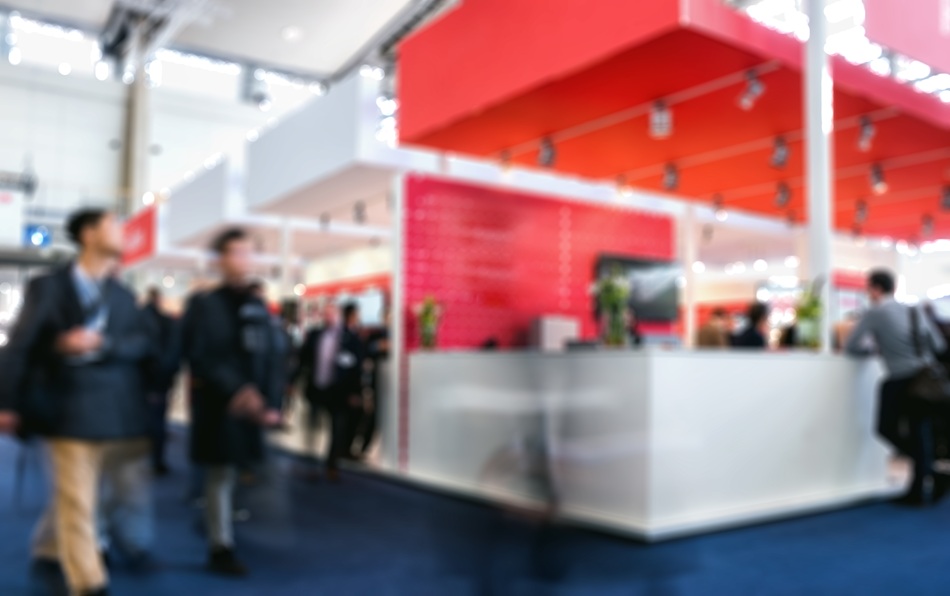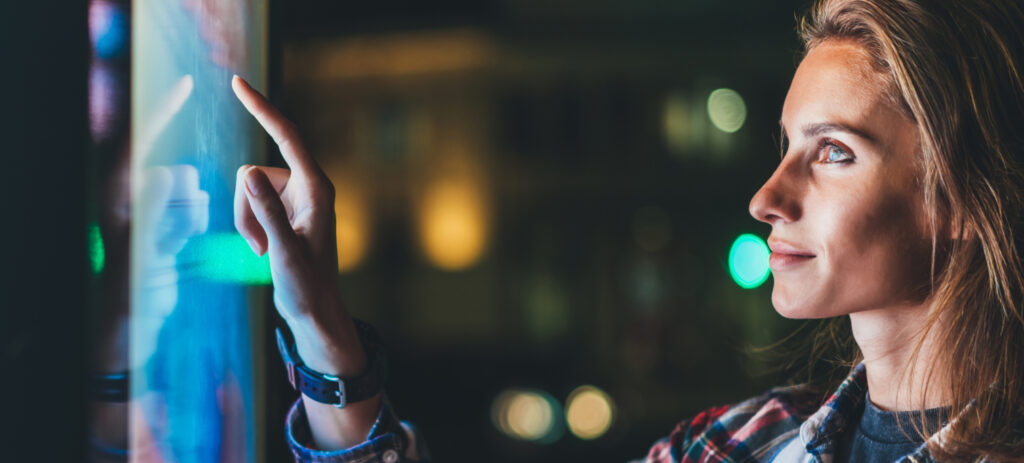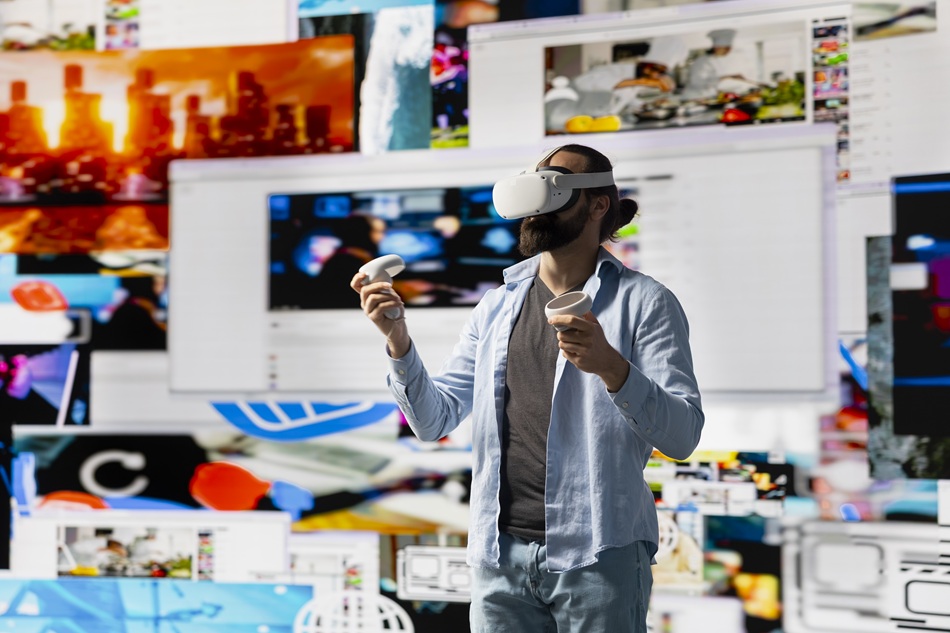Trade show floors may look the same as they always have: rows of booths, branded banners, and smiling, uniformed staff. But attendee behavior has changed completely. People aren’t wandering aisles after aisles hoping to be fascinated. They’re hunting for breakthroughs, tools and memorable experiences that feel worth their precious time.
This is where most exhibitors are losing, quietly and expensively. The gap, this time, isn’t between good and bad products, but between static booths and engaging destinations. Here, we’ll get into how that gap formed, why it’s widening and how to close it before 2026 leaves slow adopters behind.
The Silent Revenue Drain at Today’s Booths
A lot of exhibitors judge success by how busy their booth felt. But between foot traffic and real engagement lies a painful truth few teams measure: how many qualified buyers and/or potential customers walked past without stopping.
In-person trade shows are full of opportunity, but they’re also full of ghosts… that is, decision-makers who glanced your way, saw nothing interesting and disappeared into someone else’s pipeline.
The buyers you never meet are the ones that cost you
Look at the numbers:
- 81% of attendees have buying authority
- 64% are potential new customers, not existing accounts
- 74% say engagement at a booth makes them more likely to buy
That means almost every person you miss could have been a future deal. Not a scan. Not a follow. A real prospect.
The engagement gap is where budgets quietly die
Most trade show exhibitors assume the cost of a show is the booth, the travel, the build. They’re not entirely wrong. However, the real cost is the return you never see because the interaction never happened.
Here’s the shift happening now:
| Booth Type | Result |
| Static booth | High traffic, low retention |
| Interactive booth | Lower traffic, higher conversion |
While one team pins hopes on someone picking up a brochure, another uses interaction to double engagement and, in consequence, walk away with leads that already understand their value.
Why the Traditional Trade Show Booth Model Has Collapsed

For years, trade show success was defined by sheer presence: a clean booth, a visible logo, a stack of brochures and staff waiting to talk. That formula once worked. It doesn’t anymore. Not because the products or services are worse, but that the audience has changed and attention spans have gotten shorter in the digital age.
Today’s attendees live in a world of instant interaction. They don’t wait to be impressed. They swipe, tap and test everything they encounter. Then they walk into a trade show exhibit and face… pfft, posters and pamphlets.
The old playbook still in circulation
A surprising number of booths still follow the 1995 template:
- Branded backdrop with a mission statement
- A table lined with literature
- A bowl for business cards or candy
- Reps waiting behind the perimeter
In 2025, this looks more like a waiting room, and modern attendees don’t wait.
Modern expectations have outpaced booth design
Attendees arrive wired for engagement. They’re used to apps that adapt, feeds that move, screens that react. When interaction is their baseline, static displays become invisible.
Walking past a static tradeshow booth today feels no different than strolling past a billboard on the highway: you might glance, but you won’t stop.
The real disconnect: exposure vs experience
Most expo marketers still focus on showing their brand. Attendees are looking to experience it. Until that gap closes, even strong products will go unseen.
The Psychology of Attention on the Trade Show Floor
People don’t make conscious decisions to ignore booths. They never get that far. The brain filters what doesn’t feel relevant before logic ever kicks in. On an expo floor, this means most are dismissed subconsciously long before anyone notices what they sell.
Understanding this is the only way to break through the autopilot most trade show attendees walk in with.
We notice novelty
The human brain constantly scans for change. Anything familiar is categorized and ignored. Traditional booths blend into the background because they look like every booth attendees have already seen: logo, slogan, table, staff.
Novelty, especially movement or interaction, grabs attention because it interrupts the pattern.
Curiosity is a reflex
Give the brain something it can explore and curiosity triggers automatically. This is why attendees will march right past a stationary display but slow down when they see motion or activity.
They’re not thinking “I’m interested.”
Their brain is asking “What’s happening there?”
Experience creates memory
A pamphlet is forgotten in minutes. A moment is remembered for months. When someone does something at your booth, i.e., competes, taps, builds, tests, they build a memory tied to your brand.
That’s why people forget slogans but remember challenges.
It’s not about saying more. It’s about letting them think with their hands.
From Booth to Destination: The New Standard for 2026
The most successful vendors are building spaces people actively seek out. Their booths don’t sit and wait. Something is going on there. And people move toward activity.
This is the shift defining 2026:
Static booths display. Destinations host an experience.
What destinations do differently
You don’t remember booths because of banners. You remember them because of moments:
- A crowd cheering during a live challenge
- A line forming for an interactive screen
- A rep demonstrating on a giant display while others react
- A leaderboard updating real-time, daring you to try
Exposure fades. Experience multiplies.
Exposure says: “Look at us.”
Experience says: “Try this.”
And what people try, they remember and often tell others about. A booth with five deep interactions will outperform a booth with 200 passing glances. Always.
In the attention economy, memory is the currency
Trade show attendees won’t talk about your graphics at dinner. What they will talk about instead:
- The game they almost won
- The tool they got hands-on with
- The challenge they’re still thinking about hours later
5 Key Drivers of Modern Trade Show Engagement
Engagement isn’t random. When you study the booths that consistently attract lines, conversations and return visitors, patterns emerge. Five elements appear over and over. These are deliberate choices that activate curiosity, participation and memory.
Below are the pillars that separate destinations from displays.
1. Instant interactivity
Visitors shouldn’t need instructions. The attendee experience should begin the moment they step in – tap, swipe, start. No gatekeeping, no “ask for a demo,” no waiting behind tables. The faster someone can engage the faster they start caring.
2. Movement and motion
Stillness disappears. Motion signals activity and activity signals value. Whether it’s live screens updating, attendees interacting or dynamic content shifting, visual movement makes people pause even involuntarily.
3. Social proof and the crowd effect
One person engaging creates interest. Three people create FOMO. A small crowd creates a magnet. People trust what others are paying attention to. Leaderboards, group screens, communal interaction. These are engines of attraction.
If your booth looks empty, people assume it’s empty for a reason.
4. Meaningful participation
Not all interactivity works. Spin wheels and swag games attract freeloaders. The best trade show participation ties directly to your value. Let attendees build, test or experience something relevant to your solution.
Entertainment fades. Participation that teaches sticks.
5. Multi-sensory trade show booth design
Most booths speak only to the eyes. Smart booths speak to memory such as touch, motion, sound, even environment. It could be as simple as a tactile product test, a tap-based interface or an ambient soundbed that makes the booth feel alive.
The Technology Revolution: Why Static Screens Are Dead
For years, participants tried to modernize their booths by adding screens – looped videos, silent slideshows, tablets on stands. But screens alone don’t create brand engagement. They create moving wallpaper. Attendees may glance at it, but they won’t stay.
The booths leading 2026 are using hands-on and immersive technology as the core of the experience.
Why bolt-on tech fails
Most “digital booths” still fall flat because they rely on:
- Small tablets no one wants to lean over
- Autoplay videos with no interaction
- QR codes that require work from the attendee
Enter the giant touchscreen era

The most effective booths now use large-format interactive displays. Think 32″, 55″, 65″ touchscreens that function like a massive iPhone or iPad.
Why they work:
- Size = Visibility – They dominate the visual field from across the aisle
- Touch = Control – Attendees don’t watch; they do something
- Familiarity = No Learning Curve – If someone can use an iPad, they can use this
This combination – big, tactile, intuitive – is the breakthrough.
Not theory. Proven in the field.
This technology is already being deployed in high-stakes environments far beyond in-person shows.
“Padzilla has become a fantastic addition to our medical spaces… endless uses in telemedicine, planning and education.”
— Dr. James J. Jones, White House Medical Unit
When an interface works in medical readiness scenarios for the U.S. President, it carries weight on a trade show floor.
Top 5 Trade Show Ideas to Maximize Booth Engagement
Great trade show booths are intentionally built to stop movement, spark curiosity and invite participation.
Below are five proven trade show marketing strategies used by top-performing exhibitors – field tactics that consistently generate meaningful engagement.
1. Lead with a value experience
Most exhibitors introduce themselves. Winning exhibitors introduce the visitor’s reward. Instead of saying who you are, show what they’ll get if they stop.
Examples that work:
- “See how fast you can build a custom report.”
- “Test your industry knowledge – live leaderboard.”
- “Build your own workflow in under 60 seconds.”
Your booth should ideally offer a challenge or outcome.
2. Design a flow
A visually attractive booth is purposeless if attendees don’t know what to do when they arrive. Movement should be guided from aisle glance to interaction to conversation.
The ideal journey:
- Attract: Something visible from the aisle (motion, challenge, screen)
- Invite: Clear action (“Tap to start,” “Try it yourself”)
- Engage: Hands-on experience
- Connect: Human conversation after interaction
If visitors have to guess what to do, they won’t do anything.
3. Gamify with relevance
Games work only when they reinforce your message. A random prize wheel attracts browsers. A timed challenge that demonstrates your software attracts buyers.
Examples of meaningful gamification:
- Product quiz with learning built in
- “Beat the system” challenges showing speed or power
- Competitive tasks tied to real-world workflows
The best booth games educate through play.
4. Build shareability into the experience
Booths should spill into feeds, inboxes and post-show conversations. Give attendees something they want to share.
Smart shareable elements:
- Live leaderboards featuring visitor names
- Branded photo or video moments
- QR codes tying experience to digital reward or recap
Every person who shares becomes an unpaid ambassador.
5. Measure what matters, not just who scanned
“Busy” booths can still fail. Success isn’t traffic; it’s human engagement.
Track:
- Dwell time -Did they stay longer than 20 seconds?
- Interaction depth – Did they explore or just glance?
- Lead quality – Did they self-qualify through participation?
The Budget Myth: Why Interactivity Isn’t ‘Too Expensive’
When trade show exhibitors see interactive booths drawing crowds, many jump to the same conclusion: “We can’t afford that.” But most static booths already cost more than they’re worth. They just hide the expense in forgettable print and unused swag.
Come to think of it: interactivity is often cheaper than traditional booth setups when you measure impact in lieu of materials.
Static booths cost more
Let’s break down a standard spend per show:
| Traditional Booth Spend | Typical Range |
| Booth graphics & printing | $3,000–$8,000 |
| Furniture & hardware rentals | $2,000–$5,000 |
| Brochures & branded giveaways | $1,500–$4,000 |
| Total | $6,500–$17,000 |
Most of this ends up in recycling bins, storage crates or forgotten tote bags.
Interactive booths don’t require more money
Now compare with an interactive approach using rental tech like Padzilla:
| Interactive Booth Spend (Rental Model) | Typical Range |
| Touchscreen rental (32″–65″) | $2,500–$6,000 |
| Digital content / experience | $1,000–$3,000 |
| Reduced print needs | -$500 to -$1,500 |
| Total | $4,000–$9,000 |
Instead of buying supplies attendees won’t get excited about, you invest in something they use, remember and talk about.
Cost per qualified lead is the real metric
Exhibitors fixate on cost per booth. The leaders track cost per conversation and cost per conversion.
| Booth Type | Avg. Leads | Qualified Leads |
| Static booth | 100 scans | 3–5 |
| Interactive booth | 60 visitors | 15–25 |
Better leads. Shorter sales cycles. Higher follow-up rates.
Rental models remove risk altogether
With modern rentals, there’s no ownership, storage, technical staffing or long-term commitment. Most packages include:
- Setup and breakdown
- Remote content testing
- On-call tech support
Trade Show Planning: Your 2026 Booth Engagement Strategy
Great booths are engineered weeks in advance. If you plan like every other vendor, you’ll show up like every other exhibitor. This timeline is built specifically for engagement-driven booths.
Three months out: Define the experience
At this stage, floor plans and visuals are secondary. Clarity on the booth moment is everything.
Focus on:
- What will make someone stop?
- What interaction will they try first?
- What outcome or takeaway will they talk about later?
This is also when you should reserve any interactive technology while inventory is open and discounted.
Two months out: Build the content and prepare the team
Your tech is booked. Now build what attendees will engage with.
Tasks to lock in:
- Interactive content or challenge (demo, quiz, builder, leaderboard)
- Staff training (how to invite, not pitch)
- Pre-show promotion (“See if you can beat the 60-second challenge…”)
- Lead capture strategy (don’t wait until the show to think about follow-up)
If your staff will be reacting live, they should practice live.
One month out: Tighten logistics and test everything
Nothing kills engagement faster than tech you didn’t bother to test.
Confirm:
- All content runs on the exhibit hardware
- Backup content is ready offline (Wi-Fi fails)
- Foot traffic flow is mapped (where people will stand, watch, jump in)
- VIP outreach is sent (“Stop by! We’ve got something to show you.”)
By now, you’re rehearsing.
At the show: Adapt in real time
Top exhibitors treat day one like a dress rehearsal. They improve by day two.
Watch and adjust:
- Are people stopping but not engaging? Refine the invitation.
- Are people watching but not touching? Change positioning or prompt.
- Is energy dipping? Rotate staff, reset the tone, keep the booth alive.
Post-show (within 48 hours): Follow up from memory
A stale ‘thanks for stopping by’ email erases everything you built. Great booths follow up as if the interaction never ended.
Examples:
- “You almost topped our leaderboard! Want a rematch?”
- “Here’s the screen you built during your demo.”
- “You asked about integration. Here’s the workflow.”
Move fast. Memory decays. Momentum shouldn’t.
The Future of Trade Show Engagement

Trade shows aren’t dying. They’re evolving. What’s fading are passive booths with polite visuals and cold giveaways.
What’s rising are dynamic environments, blending digital, physical and personal interaction.
Exhibitors who adapt now will dominate before most realize the rules have changed.
AI-driven personalization is coming to the booth
Soon, interactive displays won’t show the same demo to everyone. They’ll adapt based on who’s engaging: CTOs seeing integrations, CFOs seeing trade show ROI, frontline users seeing workflow. Relevance will happen in real time, not in follow-up.
Hybrid experiences will outlive the event
Experiences will extend online – cloud demos, saved configurations, emailed replays of what attendees built or tested. Exhibitors who provide takeaways that live on will outconvert exhibitors who hand out paper.
Sustainability will push booths digital
The next generation of attendees is also the most environmentally conscious. They won’t carry stacks of paper. They appreciate technology that replaces waste. Digital experiences not only engage better. They also align with future expectations.
Data will decide which booths return
Booths once judged success on “it felt busy.” That won’t last. Real engagement metrics – dwell time, interaction depth, content heatmaps – will drive investment decisions.
Exhibitors with data will get bigger marketing budgets. Exhibitors with guesses will get cuts.
The exhibitors who lead now will lock in advantage
Those who commit to engagement before it becomes standard will set the bar their competitors scramble to meet. The gap is already widening. In a year, it will be a chasm.
Exhibit or Engage: The Choice for Event Marketing in 2026
Every marketer exhibiting at a trade show hopes to be seen. Static booths may still show up, but they won’t be remembered. The floor is shifting toward experiences and the gap between vendors who adapt and those who don’t is widening with every event.
You can rent space or you can own presence.
Two paths forward
Option A: Exhibit
Set up banners. Print brochures. Staff the table. Hope good prospects wander in. (The safe choice until it isn’t.)
Option B: Engage
Build a destination. Create participation. Let attendees use your value before you explain it. (The only choice that builds memory, conversation and follow-up.)
Your next booth will make a statement, one way or another
It will either say:
“We’re here like everyone else.”
Or
“We brought something worth stopping for.”
Lead the floor. Don’t blend into it.
Your competitors are testing interactive elements, booking tech rentals and designing challenges instead of layouts. They’re not waiting to see if it works. They’re preparing to own the three-second window you’re still hoping to win.
If you’re done being passed by, it’s time to build something people can’t ignore.
Three seconds is all you’ll get in 2026. What will you do with them?

